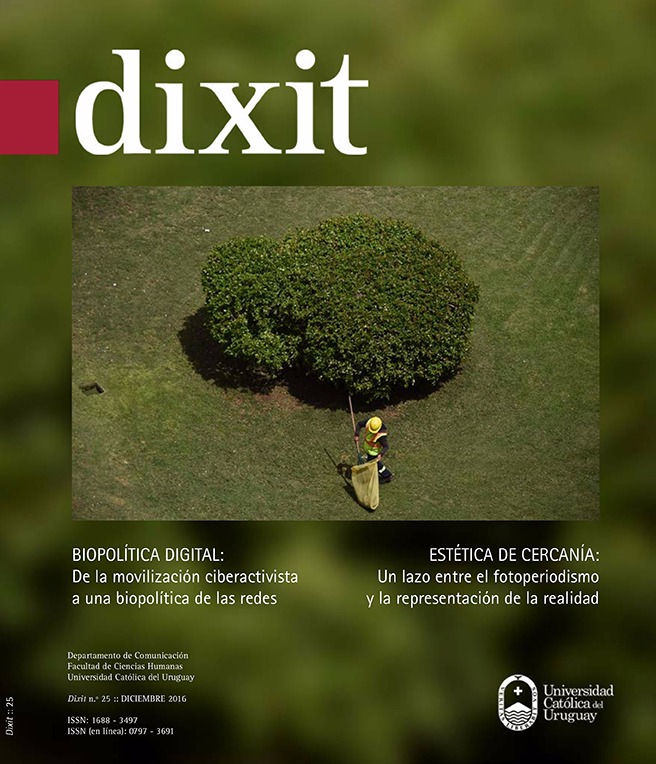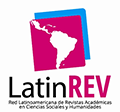The phenomenon of circulation of itinerant actors: the case of Calderon’s productions
DOI:
https://doi.org/10.22235/d.v0i25.1272Keywords:
transnationality, Mexico, cinema, migration, CalderónAbstract
The goal of this article is to study the transnational scope generated in Mexico by the cinematographic productions of the brothers José Luis, Pedro and Guillermo Calderón, who in the decades of the forties and fifties were distinguished by their recurrent transactions for the exchange of artists from different regions of Spain and Latin America in their productions. To this end, the notion of transnationality in cinema is problematized, focusing in the experiences of migration that took foreign artists to participate in Mexican cinema, studying in particular the cases of the Cuban actress and dancer Ninón Sevilla, the Spanish actress Emilia Guiú and the Spanish actor Jorge Mistral. Also, the phenomenon of migration is approached from its inclusion in the narrative plot, through the analysis of the character system and their spatial transfers in the films Los amores de un torero (José Díaz Morales, 1945) and Aventura en Río (Alberto Gout, 1953). The analysis takes into account some topics linked to production of films and the problem of the distinction between the national and the transnational.
Downloads
References
Cabañas Osorio, J. A. (2014). La mujer nocturna del cine mexicano. Representación y narrativas corporales, 1931-1954. México: Universidad Iberoamericana.
Castro Ricalde, M. (2010). Del panamericanismo al nacionalismo: Relaciones cinematográficas entre México y Cuba. Brújula, 8, 41-57.
Castro Ricalde, M. (2014). El cine mexicano de la edad de oro y su impacto internacional. La Colmena, 82, 9-16.
De la Vega Alfaro, A. (1988). Alberto Gout (1907-1966). México: Cineteca Nacional.
De los Reyes, A. (1996). Cine y sociedad en México. 1896-1930. Vivir de sueños. Volumen I. 1896-1920. México: Universidad Nacional Autónoma de México.
Hjort, M. (2010). On the plurality of cinematic transnationalism. Durovicova, N. y Newman, K. (Eds.). World cinemas, transnational perspectives (pp. 12-33). Londres: Routledge/American Film Institute Reader.
Muñoz Castillo, F. (1993). Las reinas del trópico. México: Grupo Azabache.
Paranaguá, P. A. (2003). Tradición y modernidad en el cine de América Latina. Madrid: Fondo de Cultura Económica de España.
Peredo Castro, F. (2011). Cine y propaganda para Latinoamérica. México y Estados Unidos en la encrucijada de los años cuarenta. México: Universidad Nacional Autónoma de México.
Roca Girona, J. (2007). Migrantes por amor. La búsqueda y formación de parejas transnacionales. AIBR. Revista de Antropología Iberoamericana, 2 (3), 430-458.
Ruétalo, V. y Tierney, D. (Eds.). (2009). Latsploitation, Exploitation Cinemas and Latin America. Nueva York: Routledge.
Shaw, D. y De la Garza, A. (2010). Introducing transnational cinemas. Transnational cinemas, 1 (1), 3-6.
Shohat, E. y Stam, R. (2002). Multiculturalismo, cine y medios de comunicación. Crítica del pensamiento eurocéntrico. Barcelona: Paidós.
Syder, A. y Tierney, D. (2005). Importation/Mexploitation, or, How a Crime-Fighting, Vampire-Slaying Mexican Wrestler Almost Found Himself in an Italian Sword-and-Sandals Epic. Schneider, S. J. y Williams, T. (Eds.). Horror International (pp. 33-55). Detroit: Wayne State University Press.
Filmes
Díaz Morales, J. (Director). (1945). Los amores de un torero [Película]. México: Producciones Calderón S.A.
Gout, A. (Director). (1953). Aventura en Río [Película]. México: Producciones Calderón S.A.
Downloads
Published
How to Cite
Issue
Section
License
From issue number 32 onwards all contents are licensed under the Creative Commons Attribution 4.0 International License (CC BY 4.0).
Issues number 29-31 are licensed under the Creative Commons Attribution-NonCommercial 4.0 International License.
The contents corresponding to number 28 and earlier editions are under the Creative Commons Attribution-NonCommercial-ShareAlike 4.0 International License.


















